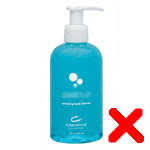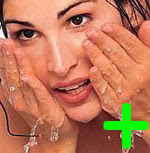Other terms which are used to describe acne especially by teenagers are zits. For most people the culprit when it comes to acne is the oil on the face. Oil or sebum as it is medically known leads to acne by trapping bacteria under in the skin pores or hair follicles which together with the dirt on the skin leads to acne.
Acne Prevention Tip #1: STOP using over the counter harsh cleansers
Harsh cleansers do nothing to help your skin. They actually make it worse by drying it out and irritating the skin. Yes, harsh cleansers will clear up acne for a very temporary amount of time. They will not get it under control or get your skin to stay clear.
Acne Prevention Tip #2: Avoid Zip Popping
You don't want to get into this habit, do you? You shouldn't! Zip popping is a very bad habit to get into! If you do, it'll be one of the hardest habits to overcome. At the beginning you might think that you'd get some relief from popping your pimples and getting rid of the in
Here is why: when you pop your pimples what you're actually doing is to push the bacteria further into the skin. This can cause further irritation to the already affected area and the skin surrounding it. Besides, popping pimples is a bothersome and many times real painful process, so why even bother! Instead of doing this, why not use a skin toner in addition to washing your face? That's something that will prove to be helpful for your condition.
Acne Prevention Tip #3: Use only water to wash your face

Use only hot and cold water to clean your face. Start with water as hot as you can handle and splash it on your face 3-4 times. Then, dry your face by dabbing it with a towel. Then, use cold water to wash your face in the same manner. This will open your pores, clean them out, and close them back up without irritating your skin at all.
Acne Prevention Tip #4: Start taking a whole food natural vitamin

Eat a nourishing, well balanced diet rich in fruits, vegetables and whole grains. Also, drink at least 8-10 glasses of water a day. Other essentials that contribute to acne prevention and control include exercise, plenty of good, relaxing sleep and stress reduction.
Acne Prevention Tip #5: Avoid artificially sweetened foods and beverages

High fructose corn syrup is the worst thing in the world for your skin. All it does is create stress in your body and allow you to break out easier. Plus it is very unhealthy for your body and skin.
Start clearing your skin with these tips and if it is still not working see a dermatologist. They are a skin specialist and can help, if necessary.

